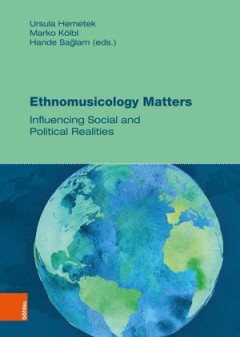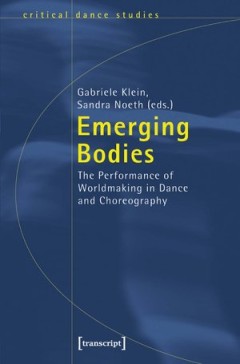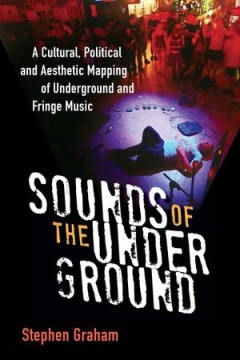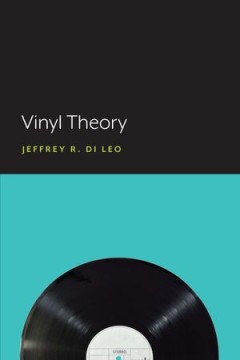Filter by

The Anglo-Scottish Ballad and Its Imaginary Contexts
This is the first book to combine contemporary debates in ballad studies with the insights of modern textual scholarship. Just like canonical literature and music, the ballad should not be seen as a uniquely authentic item inextricably tied to a documented source, but rather as an unstable structure subject to the vagaries of production, reception, and editing. Among the matters addressed are t…
- Edition
- -
- ISBN/ISSN
- 9781783740291
- Collation
- -
- Series Title
- -
- Call Number
- 780

Simone Verovio: Music printing, intabulations and basso continuo in Rome arou…
Simone Verovio was the first printer to produce a substantial number of musical prints using engraved copper plates. This intaglio printing technique not only allowed him to print on demand, but also to combine different kinds of notation on one page opening: voice parts with corresponding harpsichord and lute intabulations. This detailed comparison of intaglio and relief printing techniques in…
- Edition
- -
- ISBN/ISSN
- 9783205207184
- Collation
- -
- Series Title
- -
- Call Number
- 780

Ethnomusicology Matters: Influencing Social and Political Realities
This book gathers international voices from the field of ethnomusicology discussing the socio-political relevance of the discipline. The articles draw from contemporary discourses that take into account the role of music and dance in shaping social and political realities. An important field connected to political relevance is heritage, either in connection with the UNESCO or with archives. Ont…
- Edition
- -
- ISBN/ISSN
- 9783205232872
- Collation
- -
- Series Title
- -
- Call Number
- 780

Emerging Bodies: The Performance of Worldmaking in Dance and Choreography
The concept of 'worldmaking' is based on the idea that 'the world' is not given, but rather produced through language, actions, ideas and perception. This collection of essays takes a closer look at various hybrid and disparate worlds related to dance and choreography. Coming from a broad range of different backgrounds and disciplines, the authors inquire into the ways of producing 'dance world…
- Edition
- -
- ISBN/ISSN
- 9783837615968
- Collation
- -
- Series Title
- -
- Call Number
- 780

Soundscapes of the Urban Past: Staged Sound as Mediated Cultural Heritage
We cannot simply listen to our urban past. Yet we encounter a rich cultural heritage of city sounds presented in text, radio and film. How can such 'staged sounds' express the changing identities of cities? This volume presents a collection of studies on the staging of Amsterdam, Berlin and London soundscapes in historical documents, radio plays and films, and offers insights into themes such a…
- Edition
- -
- ISBN/ISSN
- 9783837621792
- Collation
- -
- Series Title
- -
- Call Number
- 780

Landscapes of Music in Istanbul: A Cultural Politics of Place and Exclusion
Everyday articulations of music, place, urban politics, and inclusion/exclusion are powerfully present in Istanbul. This volume analyzes landscapes of music, community, and exclusion across a century and a half. An interdisciplinary group of scholars and artists presents four case studies: the rembetika, the music of the Asiks, the Zakir/Alevi tradition, and hip-hop, in Beyoglu, Üsküdar, the…
- Edition
- -
- ISBN/ISSN
- 9783839433584
- Collation
- -
- Series Title
- -
- Call Number
- 780

The Origins of Western Notation
Modern music notation developed out of the so-called square notation and this out of the Latin neumes. The question of where these neumes came from has long been the subject of scholarly debate. As the author demonstrated in his three-volume Universale Neumenkunde published in German in 1970, there is a very close relationship between the Paleo-Byzantine notation and the Latin neumes. Although …
- Edition
- -
- ISBN/ISSN
- 9783631615591
- Collation
- -
- Series Title
- -
- Call Number
- 780

Popular Music and Public Diplomacy: Transnational and Transdisciplinary Persp…
In the early years of the Cold War, Western nations increasingly adopted strategies of public diplomacy involving popular music. While the diplomatic use of popular music was initially limited to such genres as jazz, the second half of the 20th century saw a growing presence of various popular genres in diplomatic contexts, including rock, punk, reggae, and hip-hop. This volume illuminates the …
- Edition
- -
- ISBN/ISSN
- 9783837643589
- Collation
- -
- Series Title
- -
- Call Number
- 780

Sounds of the Underground: A Cultural, Political and Aesthetic Mapping of Und…
In basements, dingy backrooms, warehouses, and other neglected places around the world music is being made that doesn't fit neatly into popular or classical categories and genres, whose often extreme sounds and tiny concerts hover on the fringes of these commercial and cultural mainstreams. The term “underground music” as it’s being used here connects various forms of music-making that ex…
- Edition
- -
- ISBN/ISSN
- 9780472119752
- Collation
- -
- Series Title
- -
- Call Number
- 780

Vinyl Theory
Why are vinyl records making a comeback? How is their resurgence connected to the political economy of music? Vinyl Theory responds to these and other questions by exploring the intersection of vinyl records with critical theory. In the process, it asks how the political economy of music might be connected with the philosophy of the record. The young critical theorist and composer Theodor Adorn…
- Edition
- -
- ISBN/ISSN
- 9781643150161
- Collation
- -
- Series Title
- -
- Call Number
- -
 Computer Science, Information & General Works
Computer Science, Information & General Works  Philosophy & Psychology
Philosophy & Psychology  Religion
Religion  Social Sciences
Social Sciences  Language
Language  Pure Science
Pure Science  Applied Sciences
Applied Sciences  Art & Recreation
Art & Recreation  Literature
Literature  History & Geography
History & Geography